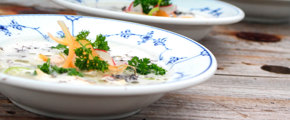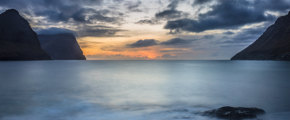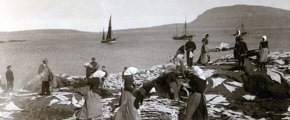Atlantic herring
Herring is both a delicious and healthy food and this bright and shimmering fish has a central role in Nordic food culture. The large consumption of herring worldwide means that the Atlantic herring has also had economic and social significance throughout history. It has even been referred to as the “silver darling” and “silver of the sea”.
The Atlantic herring is a fatty and oily fish, with an enticingly rich, clean and salty taste.
Fresh herring has an off-white, soft and chewy meat, but the texture and taste will vary depending on how you prepare it. This glistening silver-skinned fish can be prepared and enjoyed in many different ways – pickled, smoked, salted, grilled, fried or cooked.
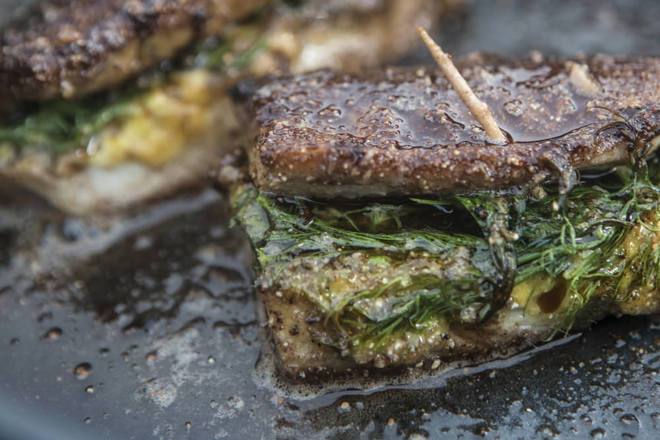
The Atlantic herring is full of healthy proteins and Omega-3 fatty acids and is rich in vitamin D and selenium.
In the cold, clean waters of the North Atlantic, herring matures slowly, and this produces some of the best tasting fish one can imagine.
Herring has been a staple in the North European diet for centuries, the Faroe Islands included, and maintains a central place in Nordic cuisine. This is especially true of pickled herring, which is included in many lunch and dinner meals around holidays such as Easter and Christmas, often served with a shot of akvavit.

Try out Faroese chef, Gutti Winther’s recipe for fried herring on rye bread.
Biology
The Atlantic herring (Clupea harengus) is a pelagic fish that travels in large shoals, counting up to a million individual fish.
There are shoals of Atlantic herring all over the North Atlantic, from the eastern coast of North America, across the southern tip of Greenland, off Iceland and around the Faroe Islands, down to the Bay of Biscay and all the way to Novaya Zemlya off the northern coast of Russia.
These shoals mostly keep close to shore but can also be found out in the open sea. As a pelagic fish, herring will stay close to the surface of the ocean, diving down to a depth of about 200 metres. The Atlanto-Scandian herring, in particular, will sometimes even dive as deep as 450 metres below the surface.
Herring is a long and flexible fish with shiny silver skin and a strip of dark blue on the top. It can grow up to 50 cm in length, though rarely more than 40 cm. It has a small dorsal fin in the middle of its back, pectoral fins on either side and a pelvic fin and a posterior fin on the stomach.
Herring feeds on plankton, small crustaceans, fish spawn and small fish, and can be found in large amounts where there is plenty of food.
In Faroese herring is called sild. Around the Faroe Islands and in the Faroese fisheries zone there are three separate stocks of herring.
Two of them – the spring spawning stock and the autumn spawning stock - keep close to shore or shallow banks and are quite stationary. They are distinguished by the fact that one spawns in the spring and the other spawns in autumn.
Then there is the North Atlantic herring stock, also known as the Atlanto-Scandian herring, which migrates and travels further and deeper into the ocean than the other two.
The Atlanto-Scandian herring migrates into Faroese waters during the spring, after spawning. It then feeds and fattens around the Faroe Islands throughout the summer, until Faroese vessels start fishing for herring in the autumn.
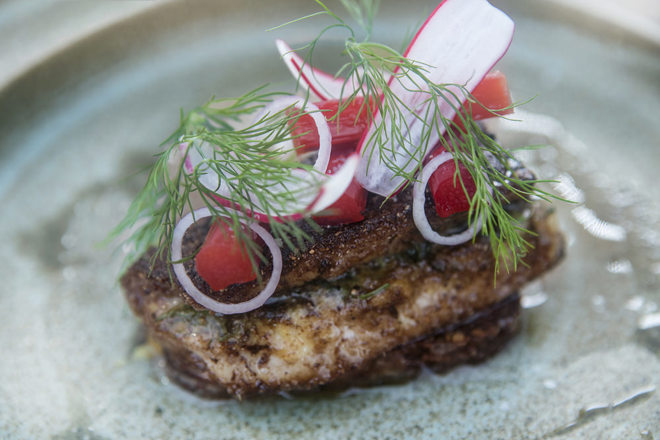
The silver darlings of the sea
Herring means army in Old Norse and just like an army, the Atlantic herring has utilised its strength in numbers to traverse the North Atlantic in search of food. Generating wealth wherever it went, this little silver fish has decided the fate of kingdoms and world powers.
Herring was the third most traded commodity in Europe during the Middle Ages, surpassed only by corn and clothing. As such, it was the foundation for several large economies and trading groups, such as the powerful Hanseatic League in northern Germany, which began to decline once herring stopped spawning in the Baltic Sea during the 15th century.
The Faroe Islands have also long prospered from the large amount of herring in the North Atlantic and there is still a lucrative fishery and trade of Atlantic herring today.
The Faroe Islands take an active part in international cooperation on fisheries management and conservation of herring in the Northeast Atlantic. Faroese herring fisheries take place in Faroese waters, the Norwegian Sea, the North Sea and to the west of the British Isles.
Exports of herring from the Faroe Islands include filleted, headed & gutted and whole frozen products.

